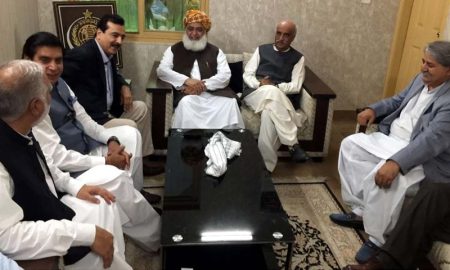Islamabad, May 04, 2025: President Asif Ali Zardari on Friday issued four ordinances, including one raising federal ministers’ salaries to match those of MNAs.
The move follows the passage of the Members of Parliament Salaries and Allowances (Amendment) Bill 2025 by both the National Assembly and Senate earlier this year.
The National Assembly’s Finance Committee, chaired by Speaker Ayaz Sadiq, approved the monthly salary hike, raising it from Rs180,000 to Rs519,000 for lawmakers.
The ordinance states that federal ministers and ministers of state will now receive the same salary as MNAs — Rs519,000 per month.
Read More: Iranian Foreign Minister Abbas Araghchi arrives in Pakistan tomorrow
Prior to this amendment, federal ministers were earning Rs200,000 and ministers of state Rs180,000.
These changes have been made to the Federal Ministers and Ministers of State (Salaries, Allowances and Privileges) Act, 1975. The revised salaries will be effective from January 1, 2025.

The increase comes amid a major expansion of the federal cabinet. On February 27, President Zardari swore in 12 new federal ministers and nine ministers of state.
Additionally, three advisers and four special assistants to the prime minister were inducted, bringing the total cabinet strength to 43 members.
Alongside the salary ordinance, three other ordinances were issued.
Read More: US Foreign Secretary Calls Shehbaz Sharif, Urges to Cooperate with India
One establishes the National Agri-trade and Food Safety Authority (NAFSA), which will regulate sanitary and phytosanitary standards for agricultural imports and exports.
Another ordinance — the Tax Laws (Amendment) Ordinance, 2025 — aims to recover tax revenues currently stuck in litigation.

The fourth, the Capital Development Authority (Amendment) Ordinance, 2025, introduces reforms to enhance the functioning of Islamabad’s municipal body.
These sweeping changes signal the government’s intention to streamline governance, while the salary hike has already drawn attention amid Pakistan’s broader economic challenges.









